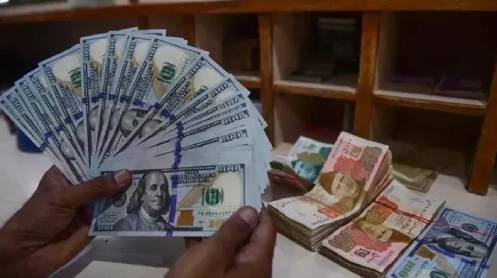ISLAMABAD: The US dollar-indexed power generators which are mostly privately owned and foreign-funded have caused turmoil in Pakistan’s power sector. Coupled with the devaluation of the rupee, the situation highlights the potential relief that could have been attained had these projects been financed domestically.
Remarkably, Re-gasified Liquefied Natural Gas (RLNG)-based power generation in foreign-funded projects proved to be the most economical, with minimal exposure to fluctuations in the dollar’s value. Comparing RLNG plants with coal-based projects, the latter was costlier with times higher capacity payments.
Of Pakistan’s derated power generation capacity of 36,277MW, 59 percent (21,374MW) is foreign-funded, while the remaining 41 percent (14,903MW) is locally funded. The issue primarily lies with foreign-funded power producers, as the government bears their capacity payments, dividends, and other repayments in dollars, putting a substantial burden on the nation.
Rashid Mahmood Langrial, Power Division Secretary, on Monday, shared data that compares various levels of dollar-rupee parity and their impact on power sector capacity payments and consumer burdens. Langrial stated, “Capacity payments doubled as the dollar rose from PKR100 to 300, with foreign-funded dollar-denominated IPPs contributed the most. Locally funded RLNG plants’ capacity payment has increased by 60 percent while foreign-funded coal plants’ payment has gone up by 145 percent.”
With the current installed capacity, if the dollar were at Rs100, the circular debt (capacity payment) would have amounted to Rs1.08 trillion, with a Rs10/unit impact on power consumers. With a Rs200/$ exchange rate, outstanding payments would have reached Rs1.617 trillion (resulting in a Rs14/unit impact), and now, at Rs300/$, the debt stands at Rs2.15 trillion, impacting consumers by Rs19/unit.
In a statement to ‘The News’, Langrial emphasised that a comparison between coal-fired and RLNG (Re-Gasified Liquefied Natural Gas) power projects underscores the economic advantage of imported gas projects.
He further elucidated this point by comparing three pie charts, each illustrating distinct scenarios contingent upon varying rupee-dollar parity levels. Notably, both coal and RLNG hold significant roles as primary contributors to Pakistan’s power grid.
RLNG power plants have a derated installed capacity of 4,687MW and a capacity payment of PKR 139 billion (at PKR 300/$), whereas coal-based projects boast a capacity of 6,777MW, with an outstanding capacity payment of a substantial Rs643 billion.
“If the coal-fired generation capacity were replaced with RLNG-based, Pakistan could have saved Rs442 billion, paying only Rs201 billion for these 6,777 MW,” he said.
At an exchange rate of Rs200/$, capacity payments for RLNG plants would have stood at Rs113 billion, while coal plants would have required Rs453 billion. Similarly, at Rs100 per dollar, RLNG plants’ capacity payments would have been Rs87 billion, and coal-fired power plants’ payments would have reached Rs262 billion.
The exchange rate also significantly affects generation costs. At Rs300 per dollar, the per kilowatt generation cost from foreign-funded projects rises to Rs7,097/month, compared to Rs5,158 (Rs200/dollar) and Rs3,218 (Rs100/dollar parity). Locally funded project generation costs increase more gradually: at Rs100/$, it was Rs1,436/Kw/month, Rs1,646/kw/month (Rs200/$), and Rs1,857/kw/month (Rs300/$).
Nuclear power plants, with a current derated capacity of 3,266 MW, have accumulated a capacity payment of Rs510 billion at the Rs300-dollar rate. Had the dollar been at Rs200, this amount would have been Rs373 billion, and at Rs100/$, it would have been Rs235 billion.
Hydel Independent Power Producers (IPPs), with a derated capacity of 2,215 MW, have capacity payments of Rs255 billion (Rs300/$), Rs179 billion (Rs200/$), and Rs102 billion (Rs100/$).
Similarly, renewables, with an installed capacity of 2,887 MW, currently have a payment of Rs260 billion. At a Rs200/$ rate, this would have reduced to Rs195 billion, and at Rs100/$, it would have been Rs129 billion.
IPP projects established under the 1994 energy policy, with an installed capacity of 3,491 MW, have a national debt of Rs86 billion on the nation. At an exchange rate of Rs200/$, the payment would have decreased to Rs70 billion, and at Rs100/$, it would further fall to Rs55 billion.
Likewise, for IPPs under the 2002 policy, with a derated capacity of 2,739 MW, the government’s payment obligation stands at Rs66 billion. At an exchange rate of Rs200 per dollar, this payment reduces to Rs54 billion, and at Rs100/$, it drops to Rs42 billion.
Notably, the exchange rate fluctuations do not impact WAPDA’s hydel powerhouse capacity of 8,578 MW and its associated payments, which remain unchanged at Rs147 billion.
It’s worth noting that over the past eight years, since 2015, the Pakistani rupee has devalued by 200 percent, reaching approximately Rs300 per dollar from Rs100. Remarkably, the first 7.5 years accounted for a 100 percent decline, with the remaining 100 percent decline occurring over the last 15 months. This sharp devaluation in the rupee’s value during the latter period has significantly increased the circular debt burden on the nation.







